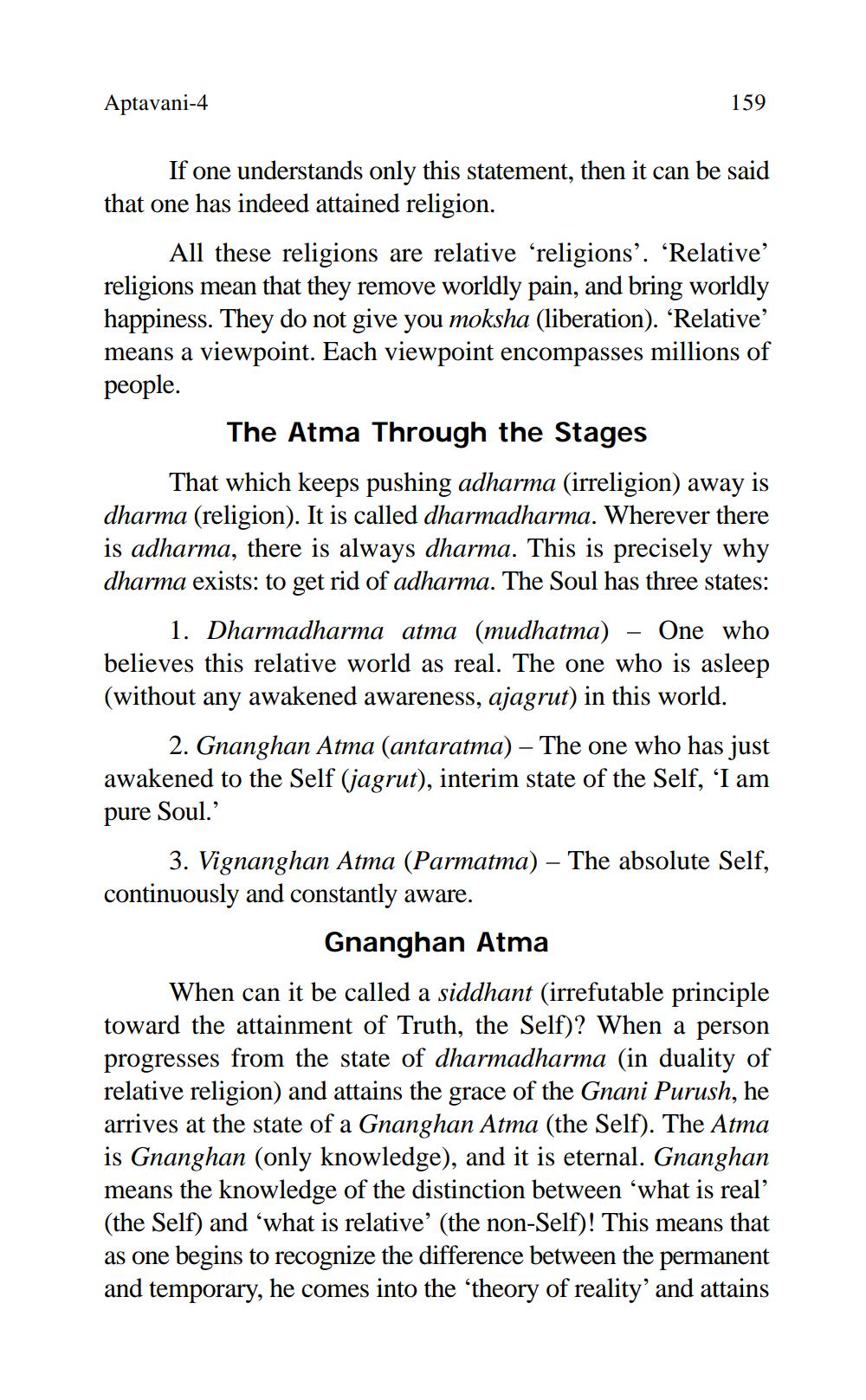________________
Aptavani-4
159
If one understands only this statement, then it can be said that one has indeed attained religion.
All these religions are relative 'religions'. 'Relative' religions mean that they remove worldly pain, and bring worldly happiness. They do not give you moksha (liberation). 'Relative' means a viewpoint. Each viewpoint encompasses millions of people.
The Atma Through the Stages
That which keeps pushing adharma (irreligion) away is dharma (religion). It is called dharmadharma. Wherever there is adharma, there is always dharma. This is precisely why dharma exists: to get rid of adharma. The Soul has three states:
1. Dharmadharma atma (mudhatma) One who believes this relative world as real. The one who is asleep (without any awakened awareness, ajagrut) in this world.
—
2. Gnanghan Atma (antaratma) – The one who has just awakened to the Self (jagrut), interim state of the Self, 'I am pure Soul.'
3. Vignanghan Atma (Parmatma) - The absolute Self, continuously and constantly aware.
Gnanghan Atma
When can it be called a siddhant (irrefutable principle toward the attainment of Truth, the Self)? When a person progresses from the state of dharmadharma (in duality of relative religion) and attains the grace of the Gnani Purush, he arrives at the state of a Gnanghan Atma (the Self). The Atma is Gnanghan (only knowledge), and it is eternal. Gnanghan means the knowledge of the distinction between 'what is real' (the Self) and 'what is relative' (the non-Self)! This means that as one begins to recognize the difference between the permanent and temporary, he comes into the 'theory of reality' and attains




